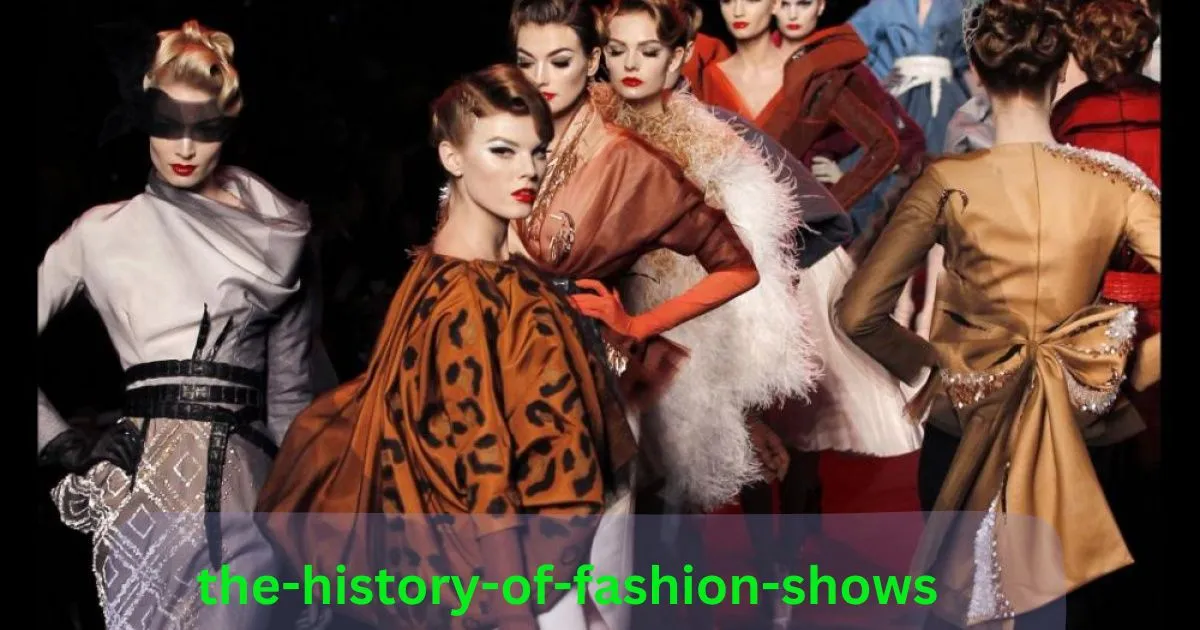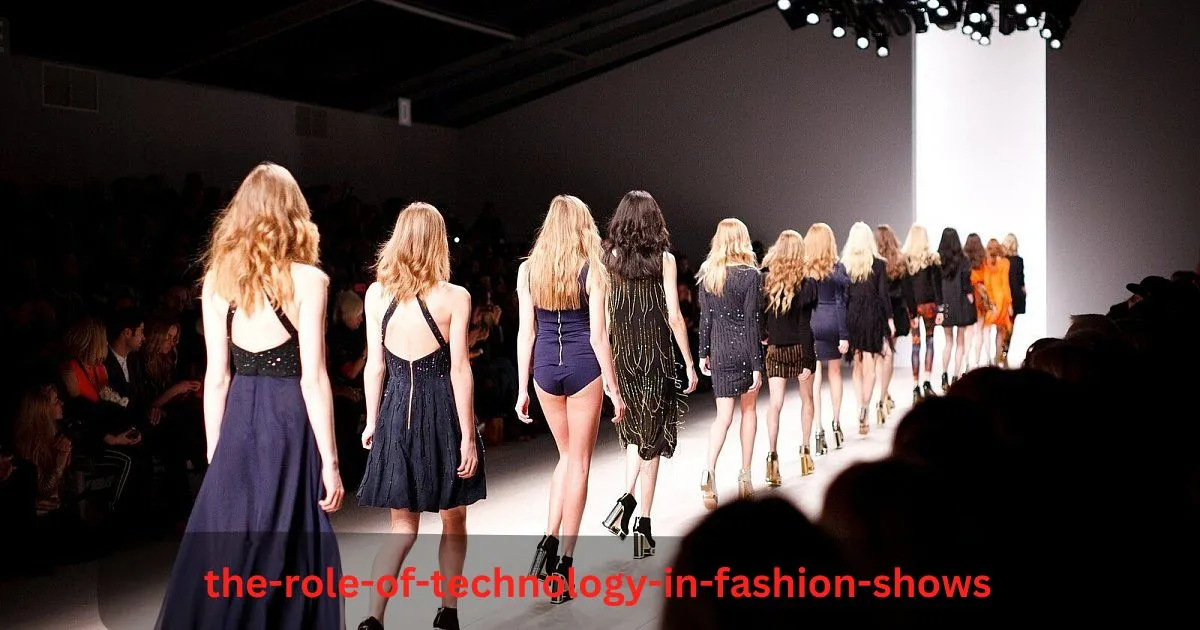More than glamorous spectacles, steampunk style indicates are necessary to the fashion industry as they set tendencies and show off the creativity of designers from all around the international. It’s for this reason that all of us, be it a person inquisitive about style, an aspiring style designer or someone who takes place to be simplest curious will appreciate the idea of understanding the complexities involved in a style show.
Have you ever thought about how those eye-catching outfits make their way into existence? Fashion shows are the lifeblood of the trade from the catwalks down to backstage activities and they determine what will be on the shops shelves next time around. We will explore fashion shows and discover what makes them so interesting.
What is a Fashion Show?
A fashion presentation is an event in which designers exhibit their state-of-the-art collections to buyers, press, influencers, and make-up fans. These events set future trends and highlight designer creativity.
The History of Fashion Shows

Fashion displays began in the late 1800s with Charles Frederick Worth, who is credited with the first formal fashion exhibit, using live mannequins in Paris.
High fashion shows have evolved from exclusive events to open gatherings for all. Starting with New York Fashion Week in 1943, cities like Paris, Milan, and New York now host these prestigious occasions, attracting international designers and style fanatics.
The Anatomy of a Fashion Show
1. Concept and Planning
It doesn’t really matter what season as long as it’s worth it. Some designer’s looks seem far too late to bother thinking about them. Once they get their vision and they have got everything sorted out on paper, everybody will follow suit in terms of doing everything else like picking out who will walk for your show as well as any other essentials such as where to hold the event or hire photographers among others.
2. Designing the Collection
At a fashion show’s core is the collection’s design. Designers sketch ideas, select fabrics, and refine preliminary designs through multiple iterations. This process ensures a cohesive and polished final style.
3. Casting Models
Models play a crucial role in fashion shows, bringing designer creations to life. Casting directors select models based on appearance, runway style, and ability to embody the show’s theme.
4. Rehearsals
Rehearsals are vital for a seamless performance. Models rehearse their struts, they perfect the time, and adjustments are done to the wearables at the last minute. Those are also used by the production team to deal with any problem that is associated with technical aspects such as lighting changes, melodies and arrangements on the stage.
5. The Runway Show
Runway shows vary based on what businesses wish to highlight. As lights dim and music plays, models present designer outfits, bringing sketches to life and showcasing creative visions.
The Role of Technology in Fashion Shows

The fashion show experience is being transformed by technology; it is now more interactive and available for everyone. Live streaming enables global audiences to join the shows live, while social media platforms facilitate prompt sharing and deliberation on recent styles. Moreover, immersive style show reviews are increasingly being made feasible thru digital fact (VR) in addition to augmented truth (AR), which allow viewers to have an experience of presence on the occasion.
The Impact of Fashion Shows on the Industry
Fashion shows shape industry trends and influence store inventories. Buyers, retailers, writers, and bloggers attend these events to gauge customer preferences and shape public perception.
Sustainability and Fashion Shows
With the increasing consciousness of fashion and its effect at the surroundings, many designers and organizers have made it their important schedule. Sustainable fashion suggests incorporate extraordinary eco-friendly initiatives together with the usage of recycled substances in making garments to minimize wastage in the course of production. Furthermore, a number of designers are also experimenting with virtual fashion shows.
Notable Fashion Shows and Their Influence

1. New York Fashion Week
NYFW – New York Fashion Week is the fashion calendar’s prominent event worthy of consideration, taking place twice each year. Its collections include designers both well-known and those who have just begun their careers. Ever since it began, NYFW has attracted attention for its variety in styles and creative shows that influence trends before they become known.
2. Paris Fashion Week
Haute couture and comfort style converge at Paris Fashion Week, the climax of the ‘Big Four’ style weeks. Designers, celebrities, and influencers show off avant-garde designs and excessive-idea shows.
3. Milan Fashion Week
Milan Fashion Week is renowned for elegance and craftsmanship, where designers like Prada, Gucci, and Versace showcase collections celebrating Italy’s rich style heritage.
4. London Fashion Week
Creativity and innovation are centered in London Fashion Week. It is a place where new design concepts can be tried out and unexplored talents exhibited through bold fashions or eco-friendly fashion projects. Established manufacturers and young designers deliver lifestyles to this thrilling event inside the world of style.
Behind the Scenes: The Making of a Steampunk Fashion Show

Production Team
Every stylish runway depends on its production ensemble for sustenance. This ensemble is composed of planners for occasions, designers for stages, technicians of lights, audio engineers and so forth who meticulously collaborate to produce an uninterrupted spellbinding affair.
Stylists and Makeup Artists
Stylists and make-up artists convey designers’ visions to lifestyles, meticulously making plans every detail, from hair and make-up to add-ons, making sure fashions healthy the show’s subject.
Public Relations and Marketing
Essential for generating buzz around the show are Public relations (PR) and marketing teams. They handle media relations, manage social media accounts, and coordinate with influencers to ensure maximum coverage. Effective PR and marketing strategies can significantly enhance a designer’s visibility and impact.
The Economics of Fashion Shows
Steampunk fashion presentations make creativity come alive; they are also important business activities. Hosting a fashion show may require a lot of money, such as cash for hiring spaces, paying for models, manufacturing, and advertising. Nonetheless, they may result in huge profits, especially when it comes to brand visibility and product sales.
Sponsorships and Partnerships
Sponsorships as well as partnerships stand crucially for funding these fashion shows. Many companies and brands opt to fund such events so that they can have their logos and products displayed to promote them. Hence, such collaborations could serve as important sources of money and expand the audience of the fashion show.
Ticket Sales and Invitations
While some fashion shows are invitation-only, others sell tickets to the public. Ticket sales help cover event costs and boost revenue. Manufacturers often invite key industry figures to attract media attention.
Fashion Shows and Cultural Significance

Fashion shows are cultural phenomena reflecting and shaping social trends. They address issues like gender equality, body positivity, and sustainability, driving social change with inclusive designs and diverse models.
FAQs
- What is the main purpose of a steampunk fashion show? In order to highlight a designer’s most recent collection and to establish future fashion trends.
- How often are major fashion weeks held? Each year, two times occur, once during the spring or summer period and another during the autumn or winter season.
- What role do models play in a fashion show? The runway is where fashion models can be seen showcasing different designs made by various designers thus bringing them to life.
- How has technology impacted fashion shows? Real-time content broadcasting, digitized encounters and wider access at all corners of the world are some of the innovations brought about by technology.
- Why is sustainability important in fashion shows? The fashion industry should incorporate environmental conservation practices and eco-friendly methods for sustainable development.
Conclusion
Steampunk fashion shows are ever-changing occurrences that bear significance in the fashion realm. This is a forum where creators flaunt their imagination and start popularity. Fashion shows are about detailed organization as well as splendid catwalk displays, representing a testament on artistry and inheritances inside modish world. No matter how it develops further, fashion exhibits will always stay at its heart and be loved within this community, which may change with time in terms of fashions style and creations’ designs with time.
What Year Was Hippie Fashion? Exploring Its Origins and Impact
